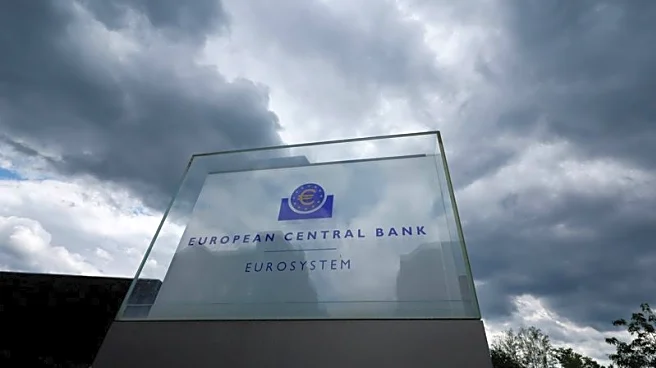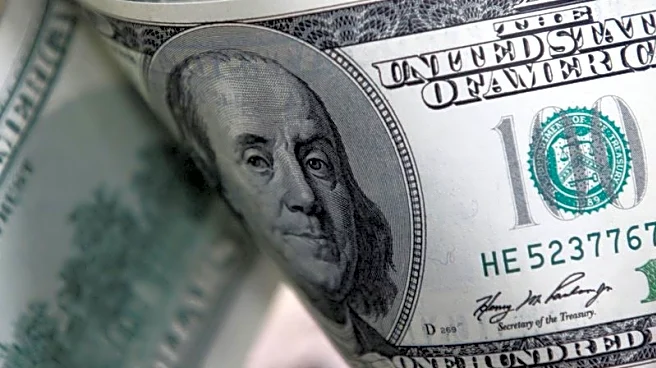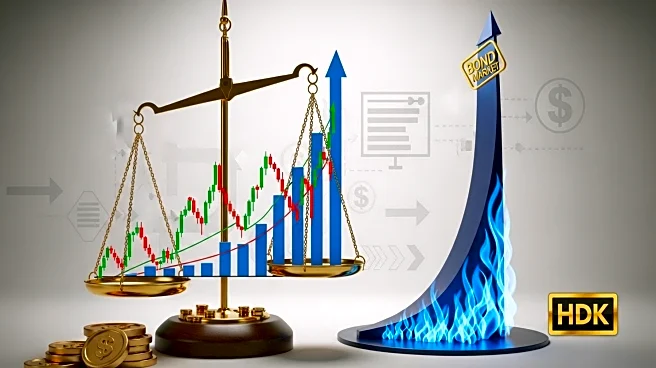What is the story about?
What's Happening?
The upcoming U.S. nonfarm payroll report for August 2025 is anticipated to be a critical event for global markets, with significant implications for the Federal Reserve's monetary policy. The report is expected to show a slowdown in job growth, with projections of 75,000 new jobs, down from an earlier forecast of 110,000. This slowdown is accompanied by an expected unemployment rate of 4.2% and a declining labor force participation rate. The Federal Reserve is under pressure to balance inflation control with economic growth, as the labor market shows signs of cooling. The central bank's September meeting is highly anticipated, with a 92% probability of a 25-basis-point rate cut. This decision is complicated by political pressures, particularly from the Trump administration, which is advocating for aggressive rate cuts.
Why It's Important?
The outcome of the jobs report and the Federal Reserve's subsequent actions could have far-reaching effects on the U.S. economy and global markets. A weaker-than-expected jobs report could lead to a further decline in the U.S. dollar, which has already fallen nearly 10% against major currencies in 2025. This decline could enhance the appeal of gold as a safe-haven asset, with projections suggesting a potential surge in gold prices. Additionally, the bond market is experiencing a shift, with intermediate-term bonds gaining favor over long-term bonds due to the anticipated lower-rate environment. The Federal Reserve's credibility is also at stake, as its independence is questioned amid political pressures, potentially affecting confidence in the dollar's reserve status.
What's Next?
The Federal Reserve's September meeting will be closely watched for indications of a policy shift. A weaker jobs report could accelerate rate cuts, further weakening the dollar and boosting gold prices, while favoring intermediate-term bonds. Conversely, a stronger report might delay rate cuts, preserving the dollar's strength but risking inflationary pressures from trade policies. Investors will need to remain agile, preparing for both rate-cut scenarios and potential geopolitical shocks. The global markets will be attentive to any signals of a policy pivot that could redefine the dollar's role, reshape bond yields, and ignite a commodities rally.
AI Generated Content
Do you find this article useful?















